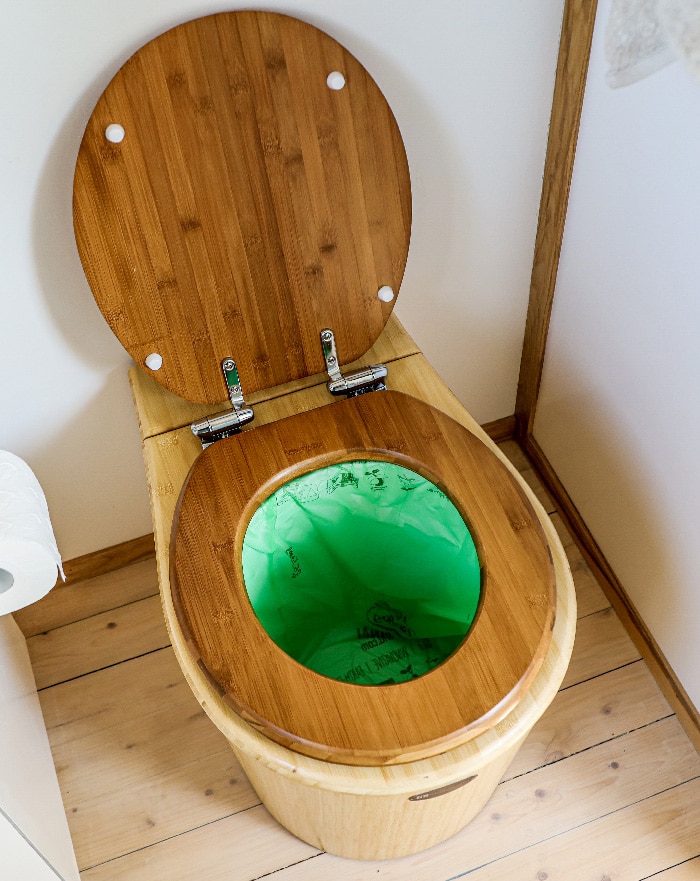FAQ
FREQUENTLY ASKED QUESTIONS
Composting toilets are a tried, tested and proven alternative to traditional waste management. Find answers to frequently asked questions below, and feel free to contact us if you require additional information.
What is Humanure?
Humanure is a term made up from the words ‘human’ and ‘manure’. It refers to human excreta that is recycled and composted for agricultural purposes (cultivation of soil, fertilization on orchards and ornamental gardens). Humanure contains many valuable soil nutrients that encourage and enhance healthy plant growth.
What is Composting?
Composting typically refers to the aerobic decomposition of organic matter. The Bambooloo™ system achieves this through mesophilic composting, in which the compost pile reaches elevated temperatures, killing any potentially harmful pathogens that may be present in the organic matter. The final result of the composting process is a high quality, nutrient-dense, pathogen-free material that can be used on trees and ornamental gardens.
Will the Bambooloo™ smell?
No. A properly managed Bambooloo™ has no unpleasant odour. The trick to mitigating odour lies in the correct use of carbon-based cover material. If your Bambooloo™ begins to smell, it’s likely that you are not using enough cover material. Please see our Recommended Cover Material guide for types and quantities of materials to use.
Where should I put my Bambooloo™?
The Bambooloo™ is designed to be placed in a dry, warm environment. This can be the bathroom of a regular house, a tiny home, an RV, a boat, a glamping site, or an outhouse.
How long does it take to fill the Bambooloo™?
The Bambooloo™ comes with a 20L bucket with screw-on lid and a starter pack of bio-degradable composting bags. On average, a single person will fill the Bambooloo in 4 days.
Is one bucket enough?
One 20L bucket used by one person will take 4 days to fill up. The more people use the system, the quicker it fills up. Additional buckets are a matter of convenience and are always handy to have. This is especially convenient when weather conditions prevent you from accessing your Secondary Treatment System, allowing you to simply sit full buckets outside the door until they can be emptied, and use spares in that time.
What Cover Material should I use?
We recommend using the specially formulated Bambooloo™ Mix, or a 50/50 mix of wood shavings and coco peat as cover material for your Bambooloo™. This allows for optimum moisture retention within the toilet. For more info, see our Recommended Cover Material guide.
Will the Secondary Treatment System (STS) smell bad?
No. The compost pile of a properly managed Secondary Treatment System does not smell bad. Just like with the Bambooloo™ commode itself, the trick to mitigating odour in the STS is effective use of carbon-based cover material. Should you ever notice an unpleasant odour coming from the STS, simply add more cover material to the top of the pile (commonly used cover materials are wood shavings and garden browns).
Can I mix my household compost with Humanure?
No. Do NOT add any foreign materials to either the Bambooloo™ itself or the Secondary Treatment System. The Bambooloo™ commode should contain your pees, poos, toilet paper, and cover material only. The Secondary Treatment System should be dedicated to composting humanure only. Addition of other materials such as kitchen waste not only fills up the systems quicker, but can also attract flies.
When is the Humanure compost ready to be used?
Once you have filled a Secondary Treatment System compost bin, it is recommended that you cover the pile in a good amount of cover material, and let it sit and mature for at least a year. Once the compost has matured, it should have a soil-like smell and appearance. If you’re unsure whether your compost has matured, simply leave it for an additional year before emptying the bin and burying the compost.
What do I do with the Humanure compost?
Final disposal of compost is achieved through burial at a minimum of 150mm sub-strata – this is required by the NZ Waterless Composting Toilets Standard. You can bury your compost inside an offal hole, a designated non-food-crop garden bed, or you can use it as fertilizer for trees and ornamental gardens! For more info, read Final Disposal of Compost.
